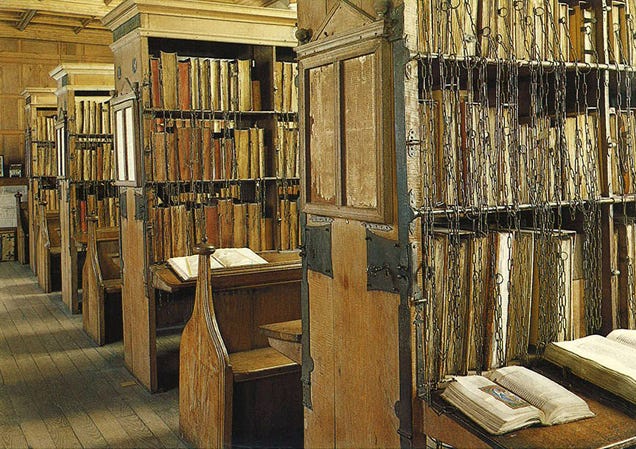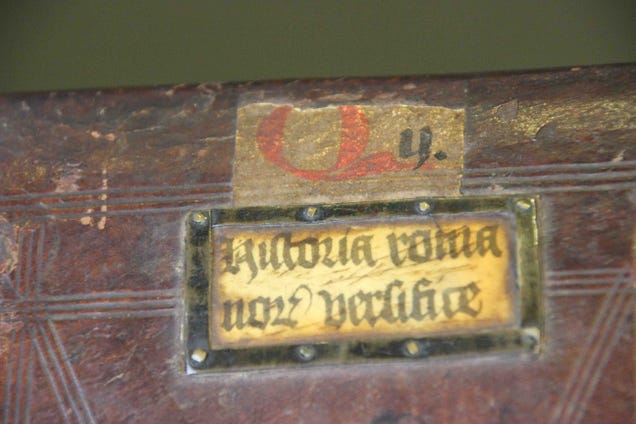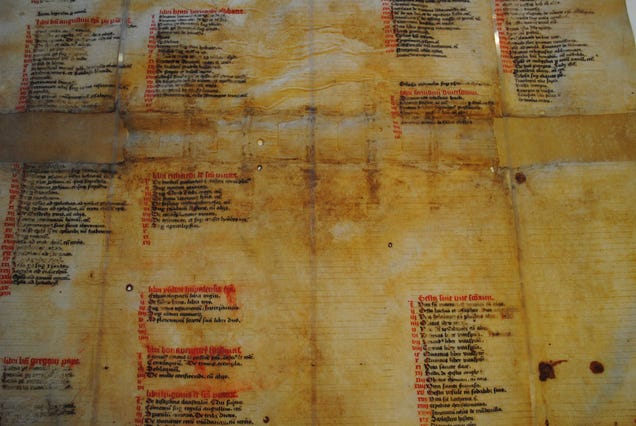
It wasn't easy to find a specific book on library shelves in the Middle Ages. The spine title had not yet been invented, and the books weren't published in standard sizes. But readers didn't have to spend hours searching, thanks to an ingenious system that made use of concepts similar to modern GPS.
At his blog, Erik Kwakkel, a Dutch scholar of medieval manuscripts at the University of Leiden, summarizes the system:
A book was tagged with a unique identifier (a shelfmark) that was entered into a searchable database (a library catalogue), which could subsequently be consulted with a handheld device (a portable version of the catalogue).
In small libraries, the shelfmarks were often sequential numbers. But in large libraries (which, back then, consisted of 26 or more books), the systems were more sophisticated. A particularly clever one is found in manuscripts that were placed on lecterns, sometimes connected by chains (top image). These shelfmarks had two components: a letter pointed to the appropriate lectern, while a number indicated the book's position on the shelf (image below). "Because manuscripts were placed on both sides of the lectern, a bit of color was added to distinguish between the sides," explains Kwakkel. "Red numbers referred to books placed on the right side, black ones to those on the left."

Library catalogues, which were originally little more than inventory lists, developed into "searchable databases" — large books or wall catalogues (below), matching the titles with the shelfmarks.

And what about the "handheld devices"? As Kwakkel explains, the catalogue of a lecturn library in one abbey near the Rooklooster Priory is the most ingenious he's ever encountered:
It comes in the form of a book with a peculiar shape… It is long and narrow, a format that indicates it was made for handheld use… What a clever tool the user ended up with. The open catalogue in his hand presented two columns, one for books on the "black" (left-hand side) side of the lectern, another for books on the "red" (right-hand) side. Moreover, each column is divided into two halves. The top half lists books placed on the upper shelf of the lectern, the lower half those on the lower shelf.Standing in front of a lectern with his handheld device, the reader knew precisely which of the volumes in front of him was the one he was looking for: he could identify it without even opening it. This particular medieval catalogue is not unlike a modern navigation system, with "GPS coordinates" directing readers to such works as Ambrose on the Psalms (Black A 1) and Augustine's Civitate Dei (Red A 5).The only difference is that it never ran out of batteries.
Source: io9.com









Δεν υπάρχουν σχόλια:
Δημοσίευση σχολίου